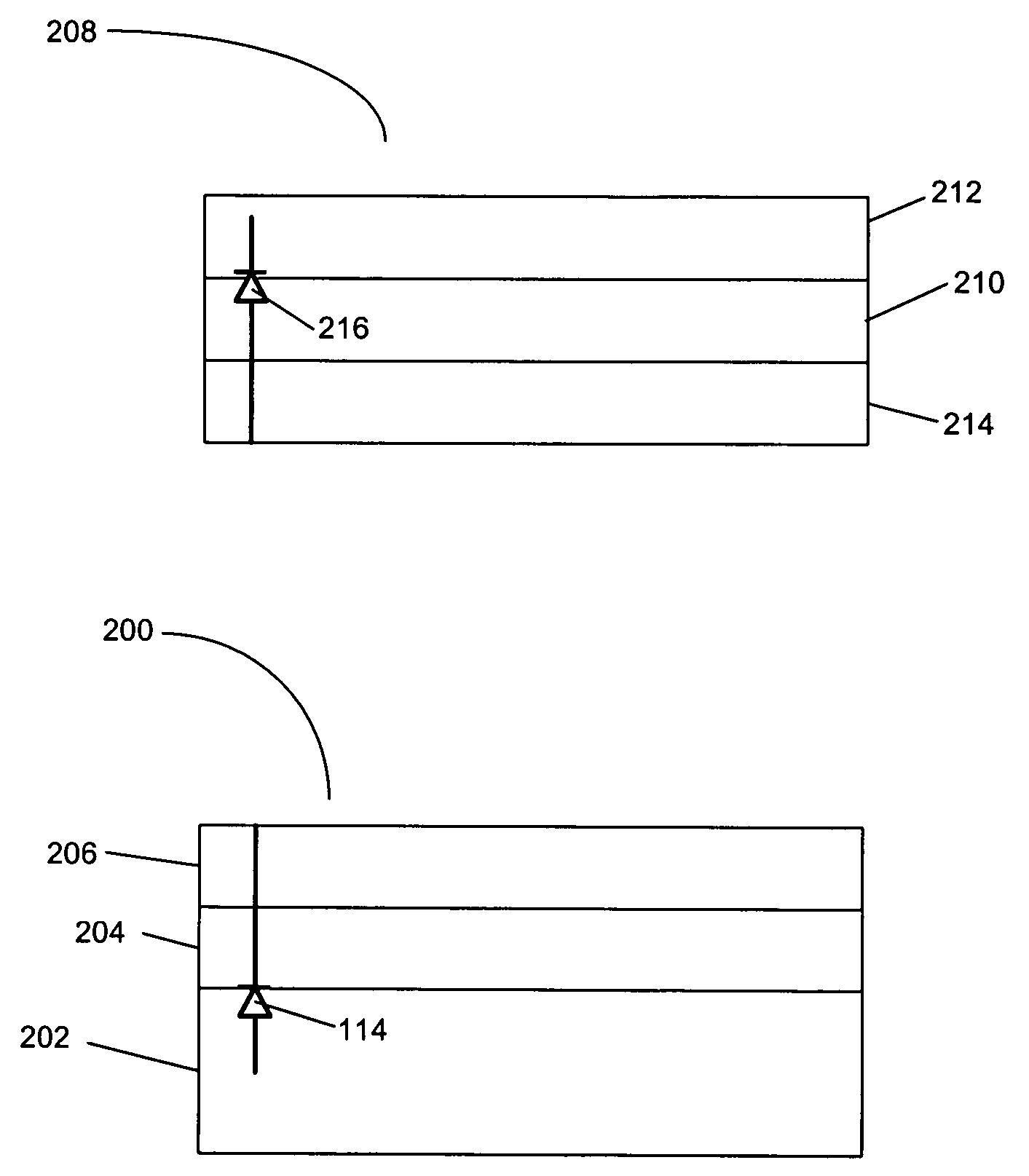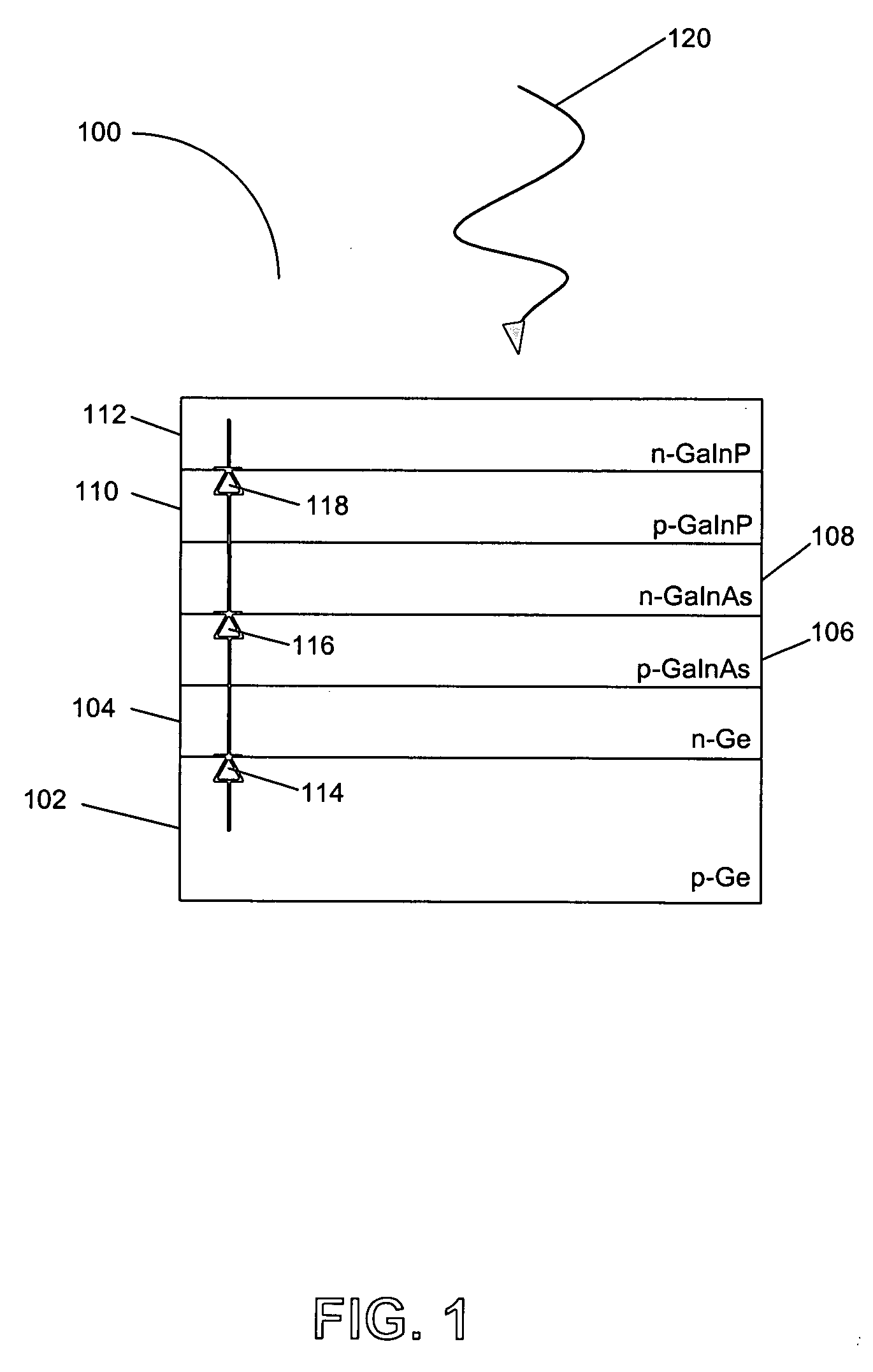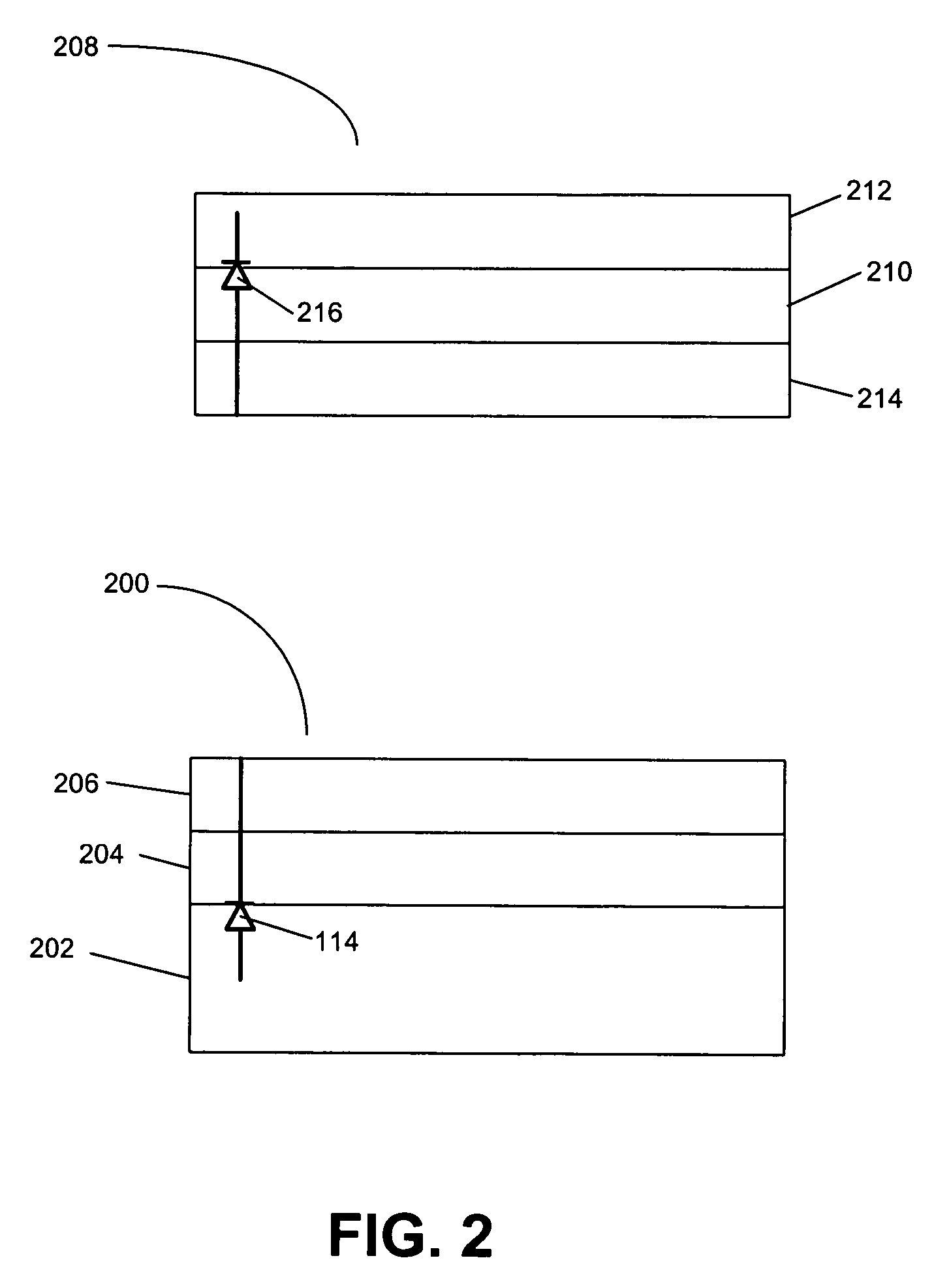Multijunction solar cell with bonded transparent conductive interlayer
a solar cell and transparent technology, applied in the field of multijunction solar cells with transparent conductive interlayers, can solve the problems of lagging at least one of these three properties of bonded solar cell materials, limited materials that can be grown on a given substrate, etc., and achieve the effect of increasing efficiency
- Summary
- Abstract
- Description
- Claims
- Application Information
AI Technical Summary
Benefits of technology
Problems solved by technology
Method used
Image
Examples
Embodiment Construction
[0025] In the following description, reference is made to the accompanying drawings which form a part hereof, and which is shown, by way of illustration, several embodiments of the present invention. It is understood that other embodiments may be utilized and structural changes may be made without departing from the scope of the present invention.
Overview
[0026] The present invention utilizes transparent conductive materials, such as a Transparent Conductive Coating (TCC), in between the subcells of a multijunction solar cell to allow for a mismatch in the lattice constants of the subcell materials. Since the TCC is typically amorphous, the limitation on the lattice constants of the materials used in solar cell manufacture is removed, leaving designers to use materials based on efficiency and wavelength spectrum absorption. Further, use of TCC material frees the designer to choose different substrate materials if desired.
Standard Multijunction Solar Cell
[0027]FIG. 1 illustrates...
PUM
 Login to View More
Login to View More Abstract
Description
Claims
Application Information
 Login to View More
Login to View More - R&D
- Intellectual Property
- Life Sciences
- Materials
- Tech Scout
- Unparalleled Data Quality
- Higher Quality Content
- 60% Fewer Hallucinations
Browse by: Latest US Patents, China's latest patents, Technical Efficacy Thesaurus, Application Domain, Technology Topic, Popular Technical Reports.
© 2025 PatSnap. All rights reserved.Legal|Privacy policy|Modern Slavery Act Transparency Statement|Sitemap|About US| Contact US: help@patsnap.com



